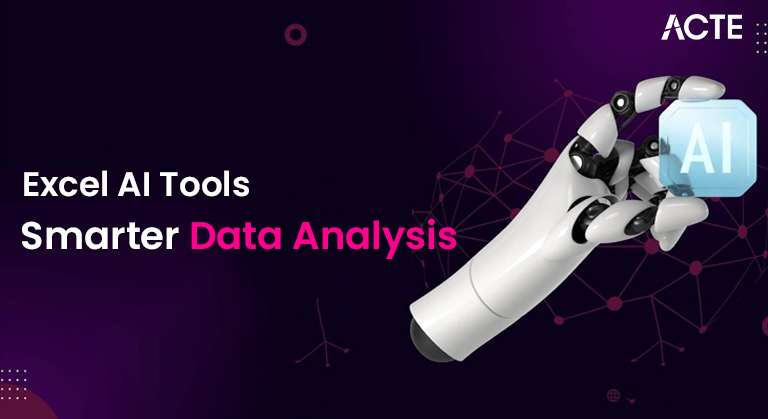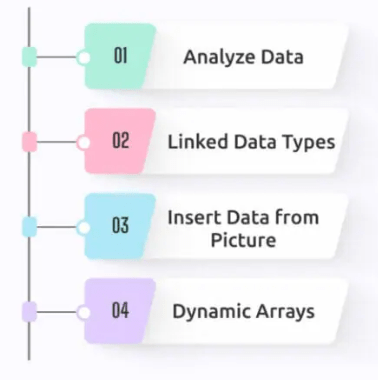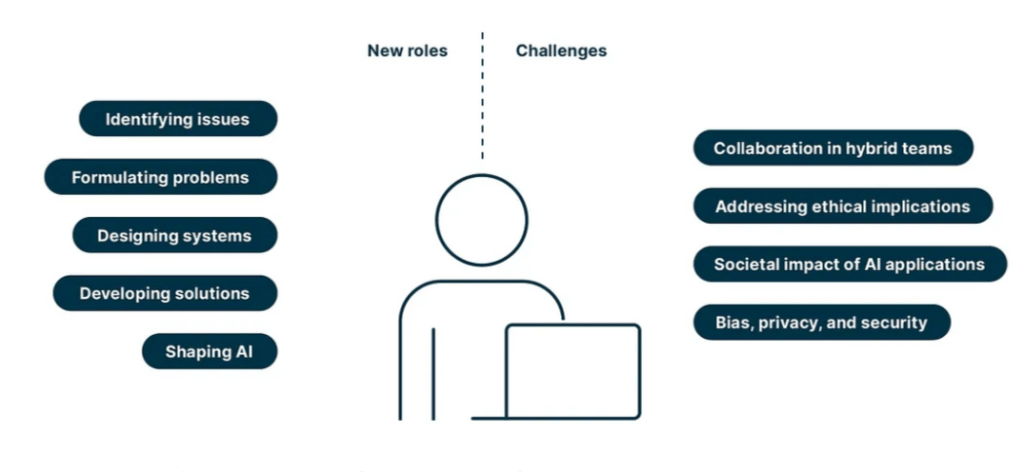
- Introduction to AI Tools in Excel
- How AI Enhances Data Processing in Excel
- Microsoft Excel AI-Powered Features
- AI Data Analysis and Insights in Excel
- Using AI for Forecasting and Predictions in Excel
- AI-Based Chart and Graph Generation
- Best AI Add-ins for Microsoft Excel
- Limitations of AI Tools in Excel
- Conclusion
Introduction to AI Tools in Excel
In the past decade, Artificial Intelligence (AI) has rapidly evolved from a futuristic concept into a practical, everyday tool that is now embedded in a wide range of applications. One of the most notable areas where AI has made a significant impact is in Microsoft Excel, a powerful platform for data management, analysis, and visualization. Through the seamless integration of AI-driven features, Excel has transformed how users interact with spreadsheets, making complex tasks simpler, faster, and more intuitive. The incorporation of AI in Excel has empowered users to automate repetitive tasks, such as data entry, cleaning, and processing, saving significant time and effort. Machine learning algorithms now enable users to analyze vast datasets with much greater efficiency, identifying patterns, trends, and anomalies that might otherwise go unnoticed, especially when supported by proper Data Science Training. Excel’s AI tools can suggest insights based on historical data, automatically fill in missing information, and even generate predictive models, eliminating the need for advanced technical expertise. Additionally, AI-powered natural language processing features in Excel allow users to interact with data using conversational language. By typing simple queries in natural language, users can ask Excel to perform complex data analyses or generate specific visualizations without needing to write formulas or code. This has made Excel more accessible to people with varying levels of technical knowledge, democratizing data analysis and empowering users across industries.
Eager to Acquire Your Data Science Certification? View The Data Science Course Offered By ACTE Right Now!
How AI Enhances Data Processing in Excel
Excel’s primary strength has always been its ability to handle large datasets, and AI takes that power a step further. AI enhances data processing by automating repetitive tasks, optimizing complex formulas, and detecting trends and anomalies within datasets that may otherwise go unnoticed. It can recognize patterns in unstructured data, such as customer feedback or transaction records, using Deep Learning , and transform them into usable structured formats. AI also enables more precise data transformations, making it easier to merge, filter, and manipulate datasets with minimal effort.
Key benefits include:
- Data Cleaning: AI tools help identify errors, inconsistencies, and duplicates in data automatically.
- Data Validation: AI can validate the accuracy of data based on predetermined rules and patterns.
- Smart Sorting and Filtering: With AI, you can quickly identify which data points are most important and filter out noise.
Microsoft Excel AI-Powered Features
Microsoft Excel offers several AI-powered features that revolutionize data processing, analysis, and presentation. These features are designed to make tasks such as data entry, analysis, and reporting more intuitive and efficient.
Ideas in Excel
This feature uses AI to automatically analyze your data and provide insights, trends, and patterns that might be valuable for decision-making. Simply click on a data set, and Excel’s AI will generate visualizations and recommend analysis methods.
Excel’s AI-Powered Data Types
Excel now includes AI-driven data types, such as Stocks and Geography, which allow you to pull in live data from the web based on a simple text query. Built on the Basics of Data Science, this AI functionality ensures that data remains up-to-date and accurate without the need for manual updates.
Excel’s Natural Language Queries
Using Microsoft’s AI-powered “Ask Excel” feature, users can type questions in natural language and get quick answers. This feature simplifies the complex querying process and eliminates the need for advanced formula knowledge.
Power Query with AI Enhancements
Power Query, Excel’s data transformation tool, has been enhanced with AI capabilities. These enhancements help in automatically categorizing data, detecting anomalies, and cleaning up datasets without much user intervention.

AI Data Analysis and Insights in Excel
Excel’s built-in AI tools are particularly valuable when it comes to data analysis. AI makes it possible to generate insights that would have been difficult to identify manually. AI models can be applied to Excel data to predict future outcomes based on historical trends. For example, you can use AI to predict sales trends, customer behavior, or market shifts. By analyzing patterns and correlations in the Data Analysis, AI can offer predictions that help in making informed decisions. AI can spot unusual data points that deviate from the norm. This is particularly useful for fraud detection, financial auditing, or any task that requires identifying outliers. AI excels in identifying complex patterns that would be difficult to spot with traditional analysis. Whether it’s customer purchase behavior or seasonal trends in sales, AI can reveal patterns in data and provide actionable insights.
Excited to Obtaining Your Data Science Certificate? View The Data Science Training Offered By ACTE Right Now!
Using AI for Forecasting and Predictions in Excel
Forecasting and predictions are key aspects of business planning, and AI in Excel is an invaluable tool for these tasks.
- Time Series Forecasting Excel’s AI-powered forecasting tools help users predict future trends in data based on historical patterns. This is especially useful for sales forecasting, stock market predictions, and demand planning.
- Scenario Analysis AI can model different scenarios based on inputs such as best-case, worst-case, and most-likely scenarios. This helps users understand potential future outcomes and plan accordingly.
- Trend Analysis Excel’s AI capabilities can detect trends over time and make predictions based on those trends, allowing for better strategic planning and decision-making.
Interested in Pursuing Data Science Master’s Program? Enroll For Data Science Master Course Today!
AI-Based Chart and Graph Generation
Excel has long been recognized for its robust and versatile data visualization capabilities, and with the integration of advanced Artificial Intelligence (AI), this functionality has evolved to become more intelligent, efficient, and user-friendly. AI now significantly streamlines the process of creating charts and graphs by intelligently analyzing datasets and automatically recommending the most suitable chart type based on the structure and nature of the data—whether it’s time series, hierarchical, categorical, or numerical. These AI-driven chart suggestions not only save time but also help users accurately represent their data insights without needing extensive experience in data visualization or formal Data science Training. In addition to recommending the right visual formats, AI enhances the user experience by enabling dynamic and interactive visualizations. These smart charts automatically update in real time as the underlying data changes, ensuring that dashboards and reports always reflect the most current information. This is particularly useful for business reporting, live data tracking, and interactive presentations. Moreover, AI contributes to polished and professional-looking visualizations through intelligent formatting. It applies optimal colors, fonts, label placements, and layout adjustments to ensure that charts are not only visually appealing but also easy to read and interpret. Whether you’re a beginner or a seasoned analyst, AI-powered visualization tools in Excel help convey complex data stories more effectively, making data-driven decision-making more accessible than ever before.
Best AI Add-ins for Microsoft Excel
While Excel’s built-in AI features are impressive, several third-party AI add-ins can further enhance your experience. Here are some of the top AI add-ins for Excel:
Preparing for a Data Science Job Interview? Check Out Our Blog on Data Science Interview Questions & Answer
- DataRobot DataRobot provides advanced machine learning capabilities directly within Excel. It helps with automating the creation of machine learning models for data predictions and classification tasks.
- XLSTAT XLSTAT is a statistical analysis add-in for Excel that incorporates AI-driven statistical techniques, including regression analysis, machine learning, and predictive analytics.
- Power BI Integration Power BI’s AI tools can be integrated with Excel, providing even more powerful analytics and visualization capabilities, especially for large datasets.

Limitations of AI Tools in Excel
- Data Quality: AI tools in Excel rely on the quality of the data being inputted. If the data is incorrect or inconsistent, the insights provided by AI can be misleading.
- Complexity of Advanced Features: Some AI-driven features, like Machine Learning Techniques or complex forecasting models, may be difficult to use for beginners or non-technical users.
- Performance Issues: Running AI-powered processes on very large datasets can slow down Excel’s performance, especially if your system doesn’t have adequate resources.
- Limited Customization: Some AI-powered features are pre-programmed, meaning there is limited room for customization to fit unique use cases.
Conclusion
AI tools in Microsoft Excel are transforming the way we work with data, enhancing productivity, simplifying complex tasks, and providing deeper insights. From automating data entry to generating sophisticated forecasts, Excel’s integration of AI is a game-changer for both casual users and professionals alike. With features like Ideas in Excel, natural language queries, and AI-driven data analysis, users can now perform tasks that would have previously required advanced technical skills with ease and speed. AI’s ability to clean data, automate repetitive tasks, and uncover hidden trends when combined with proper Data Science Training means that businesses and individuals can make more informed decisions faster than ever before. The integration of AI-powered formulas, functions, and visualizations further streamlines workflows and reduces human error, empowering users to focus on strategic thinking rather than manual processing. In short, AI has already revolutionized Excel, and as it continues to evolve, it will further cement its place as one of the most powerful tools in data analysis and business intelligence.


